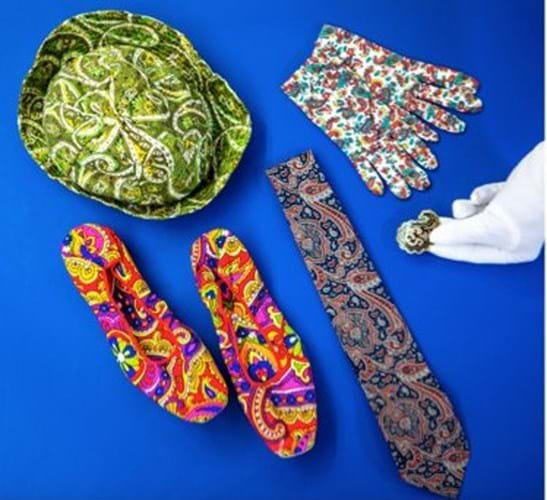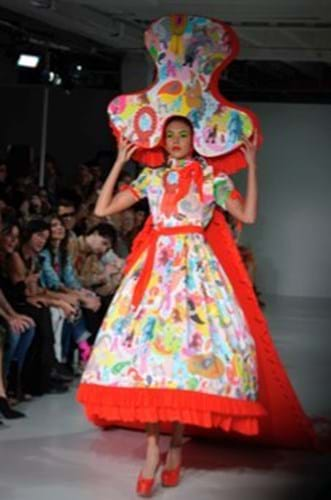It has asked members of the public and the art and antiques trade to submit items for consideration for inclusion in a new display being created as part of the museum’s £42m redevelopment.
The museum is currently closed, reopening in 2023 following the major works. The submitted items will be considered for a permanent display for the reopening.
The Scottish town became famous in the UK for the pattern during the Victorian era but the motif was actually copied from Indian shawls.
The curved droplet motif is known as a ‘boteh’ and actually originated in Persia but became popular throughout India, Azerbaijan and Turkey.
Kashmir shawls featuring the design began to arrive in Europe in the 18th and 19th centuries, brought back by travellers and via trade routes, including with the East India Company during the Mughal Empire.
The motif became extremely popular from the 1800s and European textile centres began producing imitation shawls. Manufacturers in Paisley quickly adopted new weaving techniques and technologies including jacquard looms, allowing them to mass produce the shawls allowing them to become market leaders by the 1830s. The pattern eventually became known as paisley after the shawls were nicknamed ‘Paisleys’.
Kirsty Devine, Paisley Museum project director, said: “The iconic teardrop motif has long been associated with Paisley’s history and heritage and is an integral part of the museum’s collection. We will tell the story of this design, so synonymous with the town, from its origins all the way through to its modern-day use by major fashion labels.”
Paisley-born fashion designer Pam Hogg is supporting the initiative and a social media call of #ShowUsYourPaisley has been launched.
Hogg, a patron of the museum, said: “As a child I was fascinated with the museum’s collection and can't wait for its expansion.”







